For someone who would have lifelong wanderlust of body and spirit, Mila
Jean Smith Ehrlich—unlike her parents, her sisters, her husband,
her in-laws, and her two sons—never resided more than six miles
from her birthplace. Which was the
Wesley Hospital at 926 East
11th Street, on the northwest corner of
11th and Harrison in
Kansas City, Missouri.
Her father,
Francis See Smith (F.S. or
Frank), came to KCMO from Dayton in the spring of 1913,
escaping
from the
Great Easter Flood ("Second Only to Noah's") that
had devastated much of Ohio. He joined his
father,
Herbert Gustavus Smith (H.G. or Gus) and stepmother
Cora, who'd
left Urbana OH
for KCMO the previous year. In May, having just turned
seventeen, Frank got an office job with the
American Radiator Company
and remained there for nearly thirty years, eventually serving
as chief clerk and paymaster. The plant's longtime
staff physician,
Dr. W. Connelly Anderson, delivered
the
first two Smith daughters: Mellie Agnes in 1918 and Corinne
Doris (Connie) in 1924. After their mother Katherine
succumbed to hopeless illness in 1926, Frank was obliged to give
up the family home and send the girls to stay with relatives in
Ohio, himself maintaining a boardinghouse existence for a bleak
stretch that would seldom be referred to in future.
Then into his life came
Ada Louise
Ludeke, a protegée of Frank's older sister
Mellie Morris Smith
("the original Aunt Mellie") and a star flapper/athlete at Miami
University in Oxford OH. Graduating in 1929, Ada
Louise—known to friends as "Ick," her childhood
abbreviation of Ludeke—embarked on a career as social worker,
but set it aside seven months later to elope by train to KCMO (arriving in one of its more memorable blizzards). She and F.S.
married in Jan. 1930 and settled into the Emerson Apartment
Hotel at 2017 E. Linwood Boulevard, where they were joined in
June by
young Mellie and Connie.
A third child, expected in May 1932, was intended to be The Boy:
Robert Burns Smith, Robert
for Ada Louise's beloved
Uncle Bob Ludeke and Burns for
Frank's mother's family, who had a tradition of descent from
or at least connection to Robert Burns the Poet. (A
tradition that I, while researching
Fine Lineage, would regretfully have to
scotch.)
Not till the last minute, as Frank
and Ada were getting in
the car to go to Wesley Hospital, did "Mom" turn to "Daddy" and
ask—what name if it's a girl? Which is what she turned out to be, at 2:20 a.m. on Thursday May 12th: Mila Jean Smith, Mila for
Frank's mother's
first name and Jean for the name Ada
Louise wished had been given to her instead of "Ada."
Despite her youth and athletic
background, Ada Louise had gone through an arduous pregnancy complicated by
severe anemia, followed by a traumatic touch-and-go
labor and delivery—attended once again by Doc Anderson. (Mila Jean,
on at least one occasion, would attribute her
lack of mechanical aptitude to being born with an umbilical
cord wrapped around her neck.) For Ada there'd
be no repeat performance; yet Frank, vastly relieved by the
successful outcome, assured the newborn's mother and sisters that
it was perfectly all right with him to have another daughter.
"The girls were disappointed it was not a boy," Ada Louise
said, "but I explained
that she could not be exchanged."
Daughter Number Three would always be
called Jeanie by her family, and not fully realize
her first name was Mila till seeing her
birth certificate for the first time. On May 14th Herbert Gustavus Smith wrote a note (with his left hand, the
right having been rendered useless by a
stroke):
My dear little granddaughter:
congratulations on your safe arrival after such a stormy
passage. I trust you will be yourself again after a
short rest. Don't fail to let your parents know you are
here. Let your mother hear from you quite often—let me
know when you can come as I am very anxious to see
you—now be a good little girl. You certainly chose a
delightful time of year for your debut. Tell your
mother you did the best you could to arrive on time. Be
good and write soon. Love lots of it. Grandfather
Dear Ick—now
I want you to be kind to your little daughter. Treat
her nice even if weather is warm. I trust you had a
pleasant time and experienced much pleasure meeting your
daughter. I congratulate you both on the happy
denouement. Convey to Francis my very
best wishes for the happy event ending so well.... Tell
the girls [Mellie and Connie] they must be good
and set a good example for little Roberta [sic]. Sincere best wishes. Dad
A few weeks later Jeanie got her
inaugural
taste of long-distance travel when she was taken on the first
of ten consecutive summer vacations to Ohio.
Her mother would recall:
We packed a trunk to be sent
ahead by rail, and later we left in our car driving to
St. Louis. We boarded a train there, but F.S.S.
had to return to Kansas City for his job, and also to
hunt a house for later occupancy. Fortunately we had no
problems on the train, and [Aunt] Mellie met us in
Richmond, Indiana with her car. Later in the day we
drove to
Hamilton, Ohio and visited there for a
short time. We had plenty of room there, the girls
in one bedroom and the baby and myself in another. She
used the old cradle that my
Grandma had used for her children.
As soon as the trunk arrived,
I distributed clothing and possessions to Connie, [young]
Mellie and myself.
Ora and Mame drove down from Dayton for an extended
visit. Later, I drove Uncle Bob's car to
Springfield to leave Mellie with Dad Smith and Cora, for
her visit with them.
Aunt Frieda and Jeanie went along also. For
the rest of that summer I rested, ate too much good
German food, and was proud to introduce the new baby to
my relatives and friends.
Mila Jean would remember most of these relatives
as being very kind to her, but also very old—not
least her Great-Great-Great-Aunt
Annie Koeppendoerfer, whom she'd later memorialize in a flowery
high school essay. Two
other relatives would be
singled out for particular tribute: Aunt Mol and Uncle Bob.
The original Mellie Smith ("Mol" to Mila
Jean) was a librarian and Assistant Dean of Women at Miami University, where she'd met Ada Louise in 1926.
As the house mother of West Hall dormitory, she "handled many
problems there with diplomacy. She was strict usually,
gaining the title of 'Library Bouncer.' She was usually
very calm and quiet, but a temper erupted every once in awhile"—as
was also true of her brother Frank and their father Gus.
Mol, like Ada Louise, had lost her
mother at an
early age and been raised by aunts; she became a mentor,
cherished friend, and occasional matchmaker for the young co-ed,
who would say "Bless her, she finally accomplished her goal by
introducing me to her brother."
For Jeanie it was always a big treat to
visit Mol in Oxford, and a bigger treat when Mol would come to Kansas City, getting off
the train "like
Marion
Lorne" toting paper sacks full of interesting things (which
made Frank exclaim "Oh Sis! What have you done now?)" As
a librarian, Mol was a great giver of books; at other
present-giving times the postman would bring Jeanie
"mysterious-looking packages" that contained coordinated
outfits.
Aunt Mol, always a "creative"
driver, earned a reputation for causing many minor accidents.
As Ada Louise recalled:
Someone told me, "When we
hear broken glass, we usually see Miss Smith involved"... She seemed to collect tickets from
different cities... In Urbana one Saturday a.m.,
[Mol,]
Aunt Alice
[Earsom], and Jeanie drove
downtown to shop. [Mol] couldn't
find anyplace to park, so just chose an empty spot.
When they returned to the car a half hour later, a
ticket was behind the windshield wiper, informing [Mol]
she had parked in a No Parking Zone, and please appear
at City Hall. They did, and [Mol]
vented her
anger to anyone nearby. She had to pay a fine naturally,
but when they entered [Aunt Alice's] home, Jeanie
announced, "Guess where we all were? In Jail, and
it was fun." She was wearing Aunt Alice's large-brimmed
blue straw hat, and it was plain to see she was the only
happy one in the group.
Jeanie would also find happiness in
fields where Uncle Bob Ludeke had paved the anticipatory
way, as also recalled by Ada Louise:
He was interested in the
stage: dancing, acting, music—but it was necessary for
him to always be employed (was Secretary-Treasurer of
Miami Foundry Co. in Hamilton many years and eventually
moved to Miamisburg [near Dayton] to help
support his Mother)... He was extremely talented
and appeared in all the local
amateur productions.
The thrill of my life as a child was being able to watch
my Uncle Bob on the stage—dancing and/or
acting. He bought a piano and self-taught
himself to play it. Enjoyed the social life, was
the only family member to wear a tuxedo [and an
opera cape], had many friends, attended all sorts
of delightful functions.
But Bob was struck by the influenza pandemic in
1918-19, developing encephalitis that left him paralyzed for
a long while and handicapped for the rest of his life:
His progress was slow—having
to learn to talk, walk, use hands—absolutely all
functions all over again! His sunny
disposition—patience—and determination pulled him
through. His speech was never fully recovered and
he walked very slowly—but he was 'gutsy' enough to
return to work (even having to ride the old Traction car
twice a day—to and from Hamilton and Miamisburg).
For some unknown reason he adored me and the feeling was
mutual! When baby Jeanie arrived—his cup 'really
runneth over!!!'
Jeanie would remember Bob's house in
Hamilton as always being full of gifts and fun and
Major Bowes's Amateur Hour. "Always cheerful, [he] bore his affliction with optimism and
good nature."
Ada Louise was endowed with
these resources, needing both to cope
with the dog days of 1932; neither she nor daughter Jeanie ever basked
in late-summer weather, then or afterward. "F.S.S. returned to Ohio in
August, and after two weeks's visit with all of the relatives,
we collected Mellie, Connie, Jeanie, more possessions, and on a
beastly hot day headed west to acquire our new home [in KCMO],
which F.S. had rented and partially furnished."
Having outgrown their apartment at the
Emerson, the Smiths moved into 3908 College: the fourth
house from the southwest corner of East 39th Street and College
Avenue. As described by Ada Louise:
The old 3908 neighborhood was
heavenly—typically 'middle life America' at that
particular time—everyone about on the same financial
level... In our block everybody knew everybody
else—majority were Protestants—Jews, Catholics, all
together—no frictions whatever. We had our own
little 'Town' at 39th and
Indiana: 'Crown
Drug Store'—cleaners and barber shop and beauty shop
in back—a grocery and butcher shop—'dry goods store'
(owned by a darling Jewish man, Mr.
Morris Feder, selling a world of things), hardware
store (with a plumber's office, so he could be contacted
anytime)—shoe patcher—and last, but certainly not least—Joe's
Hamburger Shop—Ha! Churches close by and
Oak Park Theatre—39th and Prospect!!
Transportation from three public service lines. As
a family, we had no problems during the Depression since
F.S.S. had a steady job—he was a good manager and I had
learned to 'MAKE DO' from Grandma—so the paycheck
stretched to pay all bills.
"This was a nice neighborhood to grow up
in," young Mellie would agree:
No one had much—but everyone
I knew had parents where the father had some type of
job. We never had lots of material things as
families do today, but we never wanted for anything.
I received 75¢ a week allowance. I knew it had to
buy my school lunch, incidental school supplies, any shows, trips downtown, and lunch. So when my
friends and I knew of something good coming to the
vaudeville show, we ate lunch every other day (a plate
of dressing and gravy—5¢) so we could pay to get in the
show, buy a peanut butter sandwich and cake at
Boppart's (next to
Midland)
and live it up! The Saturday Matinees were great!
"Yes! She was always crazy
about JAZZ and still is," Ada Louise would concur:
Saving nickels and
dimes from her small weekly allowance, she would finally
have enough to go downtown to hear visiting Jazz Bands
appearing in local movie houses—Cab
Calloway, Duke Ellington, etc. etc. etc. So many
[at] 'The [Midland] Theatre' I
recall!! Guess this was O.K. with Pa Smith—since
several girls went together to the movie, then heard the
Jazz entertainment during intermissions. [But]
she told
me about riding through the 'Red Light district' one
night—the girls hiding under a blanket in the back seat,
and the boys (some more of her crazy High School
friends) in the front seat, being invited 'up' by the
'Happy Hookers' at windows—you can be sure we did NOT
tell this to F.S.S.—Ha!
Mila Jean would add: "Daddy would have
DIED!"
Eight decades later Jeanie would still
very much be Mellie's baby sister, and Mellie would remain
Jeanie's role-model hero. A free-spirited girl who grew up
to be a
woman of fearless tenacity, she never hesitated to confront even
their strong-willed father on occasion, and after one argument would strike a blow for liberty
by legally changing her
name
from Mellie Agnes to Mildred Aileen.
"I inherited some of [his] stubborn
German characteristics," Mellie admitted, "and in my adolescence
we had some pretty good battles, but they always worked out."
Another incident was recalled by Ada Louise:
The time Mellie sneaked out
of the house was to attend a dance at
Fairyland Park... At that time the big
amusement park was a favorite place for High School kids
to go. It seems she made all arrangements to go
with her friends, but failed to ask permission until the
last minute... and good old F.S.S. 'lowered the boom'
and told her she couldn't go. She stormed back
into the bedroom and informed Connie she was going
anyway. Removing a screen from the back window,
she climbed out and left, meeting her gang in front of
the house waiting for her in a car. Natch,
she was seen by F.S.S. and I imagine the return of
Mellie and the welcome from F.S.S. was bad!!
Fortunately, I have blotted it
out of my memory! Ha!
3908 College would be Mila Jean's home
from the age of three months until she got married at
just-turned-twenty-four. The front porch was unscreened,
with a swing and glider; the first floor had a living room,
bathroom, two bedrooms (one for her parents, the other for her
older sisters), breakfast room, kitchen and dining room, from
which steps led into a "spacious retreat," the
sleeping porch (very cold in winter). The upstairs
bedroom, which Jeanie occupied till
Mellie
and Connie
left home, had a double bed, dresser and rocking chair.
She shared these with Belinda Bear, who started out white
but soon grew gray with wear and care.
By her first birthday Jeanie's
vocabulary had expanded to
"See?," "Pretty," "Dumb," and "Oh boy oh boy." That
Christmas her Grandpa Gus advised: "Take good care
of Mila Jean during the Xmas Jollification as she will be
hustling & on the move every minute you must be alert & know
what she is doing." In Sep. 1934 Jeanie attended
Sunday
school for the first time: "Refused to give up her penny &
insisted on taking a chair home." She acquired a pet,
Myrtle the turtle, who traveled with the Smiths to Ohio and back
for summer vacation (Jeanie having declared that Myrtle was a
member of the family and could not be left behind). A
"Coronation Edition" story was written by Aunt Mol for her fifth
birthday in 1937, noting that "on this same day, far far away
across the ocean in a country called England, two little
princesses are celebrating too. But not their birthday.
They are celebrating because their Father and Mother are being
crowned King and Queen of England... Jeanie asks her
Mama if she can cut out pictures of the little princesses,
Elizabeth and Margaret Rose, and paste them in a book."
"I was never meant for education," Mila
Jean would later claim, and indeed her kindergarten year (1937-38) was cluttered with obstacles.
Her entrance was delayed seventeen days due to polio—which, though
dreaded, didn't automatically mean a ticket to Sunrise at
Campobello. Many people recovered from
mild cases
without resort to an iron lung; but five-year-olds like Jeanie
were at the classic age for susceptibility, and even a hint of
polio would have prevented her mingling with other children.
She then went on to miss the entire month of
November due to whooping cough, another two weeks in January with the
measles, and two more in February with the mumps.
Despite all these absences she wasn't required to repeat kindergarten, which
would have added not one but two years to her
educational timeline (as explained
below).
In June 1938 Mila Jean received her
first love letter, from
Heinie the butcher at 3842 Indiana, to whom she'd sent a
card from Ohio. "Sorry you had such a heavy
trip," he sympathized. (Jeanie was also prone to
car
sickness.) "Yes I guess I will keep you at the top of
my list, but if you stay in Ohio over two months I'll have to
demote you... Well have a good time, and don't grow too
much so I won't know you when you come back to good old K.C."
For the next six years Mila Jean attended
Sanford B. Ladd Elementary
School at 3640 Benton, where "we had a good time for the
most part." In first grade (1938-39, taught by Iva E.
Jones) her best subject was Reading. In second (1939-40,
taught by Anna May Crooks) she dealt with influenza,
impetigo, and a tonsillectomy; but also made a best friend,
Dolores Ann "Dee" Glogau, who came to Jeanie's eighth
birthday party along with ten other girls and Miss Crooks. In third grade
(1940-41, taught by Elizabeth Morris) Jeanie for the first time
was present for every one of the school year's 200 days, and was
called "a joy to have in the room."
The war years brought numerous changes
and cutbacks. American Radiator closed its Kansas City plant in 1940; Frank held
on with a skeleton crew of office workers until May 1942, when
"he was the last to leave and 'lock up' (a very sad
experience)." The parent company wanted to transfer Frank
to Buffalo, but he'd been there on business and didn't care for
the climate. Instead he spent the next five years in charge of the
Kansas City Quartermaster Depot's Personal Effects Bureau,
processing belongings of deceased military personnel.
The Bureau was "extremely busy (usually worked seven days a week) always and
naturally depressing work. All effects were checked
thoroughly before being sent home to Next of Kin—even to
sterilizing and cleaning of all clothing (removing bloodstains
etc.)."
No summer vacations to
Ohio were taken in those "Is this trip
necessary?" years, when gas and tires were rationed. Few photos were
taken and none were added to the Snapshots album that had
been kept for Jeanie since birth. For awhile, elementary
schools
replaced letter grades with checkmarks: "No check under a
subject means that good work has been done. One check
means that improvement is necessary. Two checks means that
improvement is urgent and that a conference with the teacher is
advisable." Jeanie's report cards were commendably
blank for fourth grade (1941-42, taught by Margaret Ferguson),
fifth grade (1942-43, taught by Eleanor Adams) and sixth grade (1943-44,
taught by Ethel Burns); though Mrs. Ferguson did remark that
"Sometimes I feel that Jean does not work up to her ability"
(later upgrading this to "She is growing in poise and in ability
to command a situation").
The Mar. 6, 1942 Kansas City Journal
announced the winners of a comic strip coloring contest; among
the ten fourth-place winners (for children aged twelve or
younger) was "Jeanie Smith, 9½, 3908 College." Her subject
was not mentioned, but the most popular choice for colored-in
comics was said to be "Invisible Scarlet O'Neil, the beautiful
girl who makes herself invisible by pressing a strange nerve in
her left wrist."
By and large Mila Jean found World War
II "a blast," particularly when bellicose films and newsreels
were shown at the Oak Park Theatre, where two
double features could be seen in one weekend. She and other children
would make so much noise cheering on the Allies and berating the
Axis that Oak Park "had to keep shutting down the projector, and
[the manager] would say, "Kids! If you don't quiet down,
we won't show the rest of the movie!'"
All Jeanie would say of her two years at
Central Junior High was that they were "not so good."
She may have reached her
full
height of 5'8" at this time, causing social and
physical awkwardness—the latter indicated by mediocre grades in
Gym. (She would also remark that during adolescence she
had to "grow into her face.") In seventh grade (1944-45) she
showed consistent excellence in English and History, and began
playing the violin in
Wilfred C. Schlager's school orchestra.
The KCMO School District introduced
eighth grade in 1945-46, to "give more time for physical and
mental maturity before a pupil began high school... For
years it was argued that the jump from seventh grade to freshman
in high school was too great, and usually left the student
bewildered."
Even so, in Fall 1945 only transfer students were enrolled as pioneering eighth graders
at Central and elsewhere (which would result in
minuscule
graduating classes in 1950). Mila Jean's class was the
last to go directly from seventh grade to "sub-freshmen."
Which means that if Jeanie'd been obliged to
repeat kindergarten in
1938-39, she'd have gone from
seventh grade in 1945-46 to eighth in 1946-47, and not graduated
from senior high until 1951 instead of 1949—tearing an
irreparable
hole in her space-time continuum.
During Mila Jean's second semester as a
"sub-freshman" she switched from Mr. Schlager's Orchestra class
to one taught by
Maurice L. "Mo" Cater, the senior high school's music
director. He held the same position at
Agnes Avenue Methodist Church, where Jeanie (like Mellie
before her) had gotten permission to go with school friends
rather than attend Linwood Presbyterian with her parents.
At Agnes Avenue on Nov. 17, 1946,
Jeanie made her "one and only venture into violin soloing in
public." She would later part with the Methodists after
being asked to sign a no-smoke/no-drink pledge, and in college
come to accept The Stage as her temple and tabernacle; for which
her devout father Frank would dub her (only half-facetiously)
"My heathen daughter Jeanie."
Mila Jean attended
Central High School from 1946 to 1949: the era of
postwar
bobbysoxers. Whether or not she did any swooning over
Sinatra or Perry Como, Jeanie definitely sported the trademark anklets (worn
with saddle shoes or penny loafers) and was a reader of
Seventeen magazine, launched in 1944 to track trends and tap into disposable
teen-girl income from allowances, babysitting and whatnot.
Whatever her footwear, high school posed
challenges old and new. In her sophomore year (1946-47)
Mila Jean again had to wrestle with Physical Education, finally
escaping with the equivalent of a
D+. Her homeroom
and English teacher,
Estelle Morrison, was "a formidable no-nonsense woman who
never ingratiated herself with students," but in the 1980s
Jeanie would still remember things she'd learned from her.
And besides Orchestra with Mr. Cater she took a Vocal Music
course with
Helen E. Davidson, scoring top marks both semesters.
During her junior year Mila Jean joined
Minerva Literary Society (M.L.S.) and was one of its six Intersociety
Contestants on Apr. 29, 1948. For her entry in the
Informal Essay category, Jeanie—using the pseudonym "Brenda
Starr"—submitted a
memorial to
the late Annie Koeppendoerfer. Excerpted in Fine
Lineage Chapter L-1,
it says as much about its young author as its old subject and
so is presented below in toto:
Just Annie
I was very fortunate in being
blessed with a great-great aunt. I remember as a
very small child, always being able to win a certain
amount of distinction by merely announcing that I had a
"twice
great aunt." And how aptly that described her,
for she certainly was twice great in everybody's
opinion.
Born many years ago, in a
small community of good German stock, she lost her
father at a very early age, and having many
responsibilities in her own home as a young girl, she
knew little of the carefree childhood that most of us
only take for granted. While still in her early
teens, her mother died, and she then did housework for
some of the better families, those who could then afford
to have a 'hired girl.' She preferred doing this
rather than live with relatives because she did not want
to be a burden on anyone. In later years, when her
niece, who was my great grandmother, lost her husband
and was left with a family of small children, she went
to live with them because she felt she could be of more
service there, than in a stranger's home.
My great-great aunt had a
very unusual, and almost unpronounceable last name,
K[o]eppendoerfer. So few people even attempted to
pronounce it, that consequently she
was known as Miss Anna, and
later, as an aunt to many nieces and nephews, she was
recognized as Aunt Anna or Tanta Anna to most everyone
in the community.
Tanta,
being the German word for Aunt, seemed too difficult for
me to master when I was learning to talk, so I just
called her Annie.
In thinking of Annie, that
well known poem, "Little Orphan Annie" by James Whitcomb
Riley, is always brought to my mind. The first
line in itself, "Little Orphant Annie's come to our
house to stay," describes her situation so well.
Of course, I didn't have the opportunity of making my
home with her, but each summer for many years I was
taken back East by my mother, and we always visited in
that particular home. So, through direct contacts
with Annie, plus the many things told to me by my
mother, all have built a vivid and beautiful memory of a
dear lady.
"Lady," in the true sense of
the word, means a well-bred woman of refined manner, and
how well that described Annie.
Being deprived of proper
schooling didn't prevent her from reading good
literature, learning to speak correctly, and having
perfect manners, so that she always gave the impression
of being a high-born woman. Annie was taught early
in life that "children should be seen and not heard,"
and she practiced that rule all her life, child or not.
I well remember her quietly sitting in her favorite
rocker, alert to all being said, but never speaking
unless she had something worthwhile to contribute to the
conversation, and then speaking in a soft,
well-modulated voice.
But Annie was far from being
a shy little mouse. I recall Mother telling me
that Annie taught her father how to whistle through his
teeth, when he was depairing of ever learning that
trick; of how she patiently taught a nephew the best way
to shoot marbles, a niece to master the intricacies of
"jacks," and my own mother how to spin a top. Her
gentleness not only won her the love of every child she
came into contact with, but every animal too. A
dog would know instinctively that Annie would dislodge a
chicken bone from his throat, or a bird with a broken
wing would lie passively in her hand as she bound the
wound.
Annie not only lived
beautifully by her kind deeds, but she never spoke
unkindly about anyone. Even in the worst, she
could find something good to say about them—and
if it was impossible to find any good in a person, she
just had the good sense to not say anything. She
truly possessed the ability to grow beauty too, for her
flower gardens were the attraction of everyone and the
envy of many people. Planting a lonely peach seed,
would in time develop into a peach tree, which would
bear fruit also.
From early photographs of
Annie, anyone could see she was a lovely young girl.
She possessed curly soft hair, very large expressive
grey eyes, small and dainty features, and a smile that
was a joy to see. I never could understand why she
didn't marry, for she had many beaux, danced better than
anyone of her friends, and was very popular, but taking
her responsibilities at home very seriously, she no
doubt considered her duty to her mother more important
than marrying and her own happiness. Annie
possessed a beautiful singing voice too, and she sang in
church choirs when a young girl, and I remember on many
occasions even when she was quite old, of hearing her
softly singing an old German song around the house, in
her rich contralto voice.
I don't believe I ever knew
anyone who was so immaculately dressed at all times, as
Annie. She was tiny and petite, and in her
starched full-skirted, high-necked dresses, she was
indeed a Godey
print. For morning wear, she always wore a black
or dark gray percale or gingham print dress, always long
sleeved, high necked, and ankle length of course.
The very full skirts, with several starched petticoats
unerneath, made her look like a cute little Dutch doll.
A very full apron of checked gingham, and sunbonnet were
donned if she chanced to go out in the sun, and for
afternoon and evening, she always changed to a plain
black dress made the same way, and topped with a snowy
white apron. On the Sabbath (she never referred to it as
Sunday) she wore plain black silk, with a touch of white
lace around the high collar, and a lovely white, lace
edged apron was worn. Of course she always wore
high black laced shoes, and gloves were an essential
part of her costume, always wearing them to protect her
hands from the sun. Annie always removed her apron
before going to the table for meals, and she never once
ever crossed her legs at the knees. She told my
mother that ladies didn't cross their legs. Her
fine gray hair was worn simply in little braids at the
back of her head for morning time, and in a soft knot
and "frizzed" in the front.
Annie was always blessed with
good health that afforded her the ability to work hard
for many, many years, always helping others, their
welfare coming first. When any of the family or
neighbors were ill, they could always count on her being
by their bedside to comfort them and help them either by
actual nursing them through their illness, or by just
sitting quietly, and talking to them and helping them to
forget their misfortunes. Annie had one serious
illness, when she was very old, and all despaired of her
getting well, but after many weeks in bed, she calmly
announced one day that she had been a burden on folks
long enough, and it was high time she was getting up and
about. So double-pneumonia couldn't even keep her
down.
After reaching the age of
ninety-two years, Annie was still fairly active, and
insistent in carrying on some of her daily duties.
She was still cheerful at all times, but she said often
that she felt it was time to leave because all of the
relatives and friends of her own age were gone, and she
felt she had fulfilled all her obligations. So
finally, one beautiful spring morning, Annie slipped
away from all of us, but I have always felt that it was
only because someone else needed her help in the other
world.
Two of the Intersociety Contest
judges deemed this worthy of first place ("Holds your interest,
written well" and "Grammar good"); but it finished behind "The
Priceless Heritage," "Privileges of Age," "The Wisdom of the
Lazy," and "Lazy Thoughts."
Not favoring laziness was Mila Jean's
junior English teacher,
Bess
G. Clapp, "who made her students individually recite
Macbeth." Jeanie sang with the Girls Chorus in
1947-48, continued to play violin with the Orchestra, and was as
an officer in the Y-Teen Cabinet. Though free at last from
Phys Ed, she now had to contend with Typing, which would be the
only blemish on her report cards for the next four semesters.
(While typing "Just Annie," no attempt was made to sustain a right margin; each line went on till it ran out of
paper.)
Minerva's faculty sponsor,
C.S. Hann,
was a man "who snapped girls's brassiere straps." (When Jeanie
mentioned this in 1983, her sister Mellie exclaimed "Did he do
that to you too?") He would be Mila Jean's homeroom
and Zoology teacher her senior year (1948-49) and she would join
the school Zoology Club, somehow finding time for that along
with serving as President of the Orchestra,
Vice-President of
Minerva, Y-Teen's representative on the Inter-Club Council, and
a member of the Trouvere music appreciation society, for
which Dee
Glogau was Song Leader. Their friend and fellow
Trouvere/Y-Teen officer
Pat Liston
was voted Best Girl Musician in the Senior Class; all three were
elected to the National Honor Society.
Among Jeanie's other close friends were
the
Smith sisters, Mary Ann and Betty (related to each other but
not to her), who lived down the block and across the street at
3943 College; Jeanie and Betty were the same age and Mary
Ann a year older. The sisters were Catholic and evidently
attended a parochial high school, possibly Bishop Lillis at 3740
Forest; with Mila Jean they engaged in such activities as
sunbathing in the park. This must have attracted male
eyes, but no photos of any boys were retained for future sighing
(or laughing) over; nor did Jeanie ever mention any romantic
attachments prior to college—and those, she would emphasize,
weren't with boys but men. Only girls clowned for
the camera when Mila Jean turned seventeen on May 12, 1949.
A month later she (and some of they) graduated from Central High
School at KCMO's Municipal Auditorium on
June 7th.
Although Jeanie had been named to the
All-City Orchestra, she was not forecast as a concert
violinist
in the Centralian yearbook's Senior Prophecy. Nor was she said to be a torch singer,
a congresswoman, queen of the policeman's ball, or to "have had a
nervous collapse from overwork in a flea circus." Instead
the Prophecy saw her among the graduates who became teachers
at Central High—a perceptive guess, even if meant satirically.
But that destiny lay in the actual future; and not at dear old
Central but four miles to the southwest, where Mila Jean was
heading in September: the University of Kansas City.
Notes
[click on the > at
the end of each Note to return to its source above]
● Built in 1915, Wesley
Hospital was designed by the
architectural firm of
Keene &
Simpson, who went on to design the
Land
Bank, the
Armour Theatre, and the
Hall of
Waters in Excelsior Springs MO; they also participated in
designing the
Jackson County Courthouse. Wesley Hospital would be taken
over by the U.S. War Department in 1943 and purchased a year
later by the Kansas City College of Osteopathy and Surgery,
which vacated it in 1972. Today the site is an industrial
space just to the east of I-70.
>
● As a beckoning
portent for Mila Jean, the southwest corner of 11th and Harrison
was occupied by a hotel (the Royce).
>
● The
life of Francis See Smith (F.S. or Frank: 1896-1973) will be
profiled in Fine Lineage Chapter S-6.
>
● Jeanie's
grandfather Herbert Gustavus Smith
(H.G. or Gus: 1860-1934) is profiled in Fine Lineage
Chapter S-4.
>
● Cora
Mathilda Kirchwehm Smith
(1875-1963) was H.G.'s third wife.
>
● In 1912 H.G.
Smith "was an innocent victim caught up in some sort of a
political MESS [in Urbana OH] and lost his license to practice
law," according to Ada Louise. "He decided to
move away and start a new life, and chose K.C. (wonder why that
particular city)?" Gus had taught school in central
Kansas in the mid-1880s; daughter Mellie was born there,
and the entire Smith clan in Ohio contemplated joining them
("Our great objection is the want of timber"), but the death of Mellie's
mother Debbie in 1887
brought Gus back to Urbana. Possibly an old acquaintance from
his
Kansas teaching days pointed him and Cora to KCMO in 1912.
>
● The
American Radiator Company's Kansas City plant went into
operation in Oct. 1910 at 12th and Eastern Avenue near the
Blue River. The plant manufactured radiators and
boilers for steam and water heating, shipping them "throughout the entire West" (as per the
Nov. 1912 Kansas City
Manufacturers Exposition). A 1915 ad declared:
The
struggles of many a man through life seem like a journey
through a howling wilderness of bills which mount so
high that he can hardly see the blue sky of living
economy. But one of the strangest, reckless habits
of running up domestic expense is the way that many
people still cling to old-fashioned heating ways which
greedily eat up coal and send the heat a-flying up the
chimney, rather than distributing it evenly to the rooms
to comfort the folks. The only way to get out of
that wilderness of self-imposed taxation, and to
stay out forever, is by putting in an outfit of
coal-economizing American Radiators & Ideal Boilers.
>
● William
Connelly Anderson Sr. (1874-1954), besides being American Radiator's
staff physician and a consulting provider for the Kansas City
Southern Railway, had a private practice in the
northeast district. His office was across Bennington
Avenue from Fire Station 21, for which he furnished turkey
dinners every Christmas and New Year. "Among the reasons
which led him to express his friendship by the holiday meals
were the several occasions when he returned to his second floor
office and found himself locked out. The firemen provided
a ladder and a nimble member to enter a window and let him into
his office." (Per Doc Anderson's obituary.)
>
● Ada
Louise Ludeke Smith (1907-2011) was Ada Ick in childhood, Ick
at college, Icky to her husband, Mom to her
daughters, Louise to her in-laws, Momine or
Grandma or Goppy to her grandchildren and
great-grandchildren, and Smitty as a senior citizen. Her early life is profiled in Fine Lineage
Chapter L-4, her education in
L-5, her career in
L-6, and her memoirs in
L-7.
>
● The life
and career of Mellie
Morris Smith (1885-1950), Frank's older half-sister, are profiled in Fine
Lineage Chapter S-5.
>
● Ada Louise
had just turned five when she lost her
mother
to tuberculosis. Not long afterward her
father married a
young woman whom Ada viewed as the
classic wicked stepmother,
and permanent semi-estrangement resulted. (Mila Jean would
meet her Grandfather Ludeke only once, but said "he was always good at
sending a dollar at birthday time.") When Ada herself became a young stepmother, "I realized I could not be
possessive or jealous... I knew I would share a husband six
months later with his two daughters. We all grew together,
naturally having some problems, but family conferences worked
them out."
>
● The family
background and early life of Mary Adelaide/Adeline (Addie)
Schneider Ludeke (1883-1912) are profiled in Fine Lineage
Chapter L-2, her marriage
in L-3, and her motherhood
and early death in L-4.
>
● Ada
Louise's father William Michael Ludeke (1882-1975) is profiled
in Fine Lineage Chapters
L-3 and
L-4.
>
● Stepmother Drucilla
Catherine Llewellyn Ludeke (1894-1970) is profiled in
Fine Lineage Chapter
L-4. >
● Uncle Robert Wuechner Ludeke, "the Cheerful Performer" (1887-1943), is
profiled in Fine Lineage Chapter
L-3.
>
● See Fine Lineage
Chapter B-1 for the
Burns clan's Less Poetic
Pedigree, with the latter half of the 18th Century spent not in Scotland with Oor Rabbie, but among the Appalachians and Blue
Ridge Mountains of Ole Virginny. See Chapter
B-4 for my suspected
source of the More Poetic Tradition: Frank's great-grandmother
Jane Marshall Burns (1790-1880), who claimed a similar connection with Chief
Justice John Marshall's family; as well as that her hair was naturally jet
black even at the age of ninety, and that scars on her arms had resulted
from attempting to protect a slave boy from being whipped.
>
● Frank's
mother Mila Kathryn Burns Callison Smith (the Original Mila: 1859-1907) is profiled
in Fine Lineage Chapter
S-4.
>
● Over two dozen women
and girls named "Mila" were living in Ohio in 1860. Nowadays the name tends to have Slavic origins:
interpreted as "dear one," pronounced Mee-la rather than
My-la, and sometimes used as a diminutive of L(y)udmila.
In mid-19th-Century Ohio it was far more likely to be the
feminine form
of Milo or Miles—and also
seemed to flummox census takers, who recorded Frank Smith's
future mother as Maria in 1860 and
Hilda in 1870. As a result, numerous web genealogies
display her inaccurately as "Hilda Maria 'Mila' Burns."
>
● Mila Jean
never learned to drive a car, use a personal computer, or
operate a cell phone. Her husband George once attempted to teach
her the rudiments of word processing, but was put off by
Jeanie's responding like a cat being given a flea bath.
>
● The elder Smiths
had returned to Ohio in 1917 (H.G. reluctantly) so Cora could
care for her "iron-handed invalid" mother. Young Mellie
Smith lived with them in Springfield OH from 1926 to 1930;
Grandpa Gus suffered a stroke in 1928, and Mellie stayed awhile
with Frank's oldest half-brother Earl Elliott Callison (1878-1949) who
is profiled in Fine Lineage Chapter
S-4.
>
● Hamilton OH
was home to the Ludekes and Ada Louise's other forebears,
as profiled in Fine Lineage Chapters
L-1,
L-2, and
L-3.
>
● On the back of
a photo of five-month-old Mila Jean, the present author
discovered a truncated (unsent?) Christmas 1932 note from Ada Louise to her father: "Dear Dad—I'm awfully sorry you didn't
get to see the baby this summer—she is such a big girl
now—trying to talk and walk—and just..."
>
● Louisa
Elizabeth Wuechner Ludeke (1855-1930), Ada Louise's paternal
grandmother who raised her from the age of five till her
elopement, is profiled through most of Fine Lineage's
"L"-chapters.
>
● Ora Colgan
Callison (1880-1932) was Frank Smith's other older half-brother, the
second of Mila Burns Callison Smith's three sons. In 1905
Ora married the splendidly-named Mary Belle Bloodgood (Mame:
1878-1959) and Frank lived with them in Dayton from 1911
till the 1913 Flood. Ora "adored children, but never had
any of his own—hence was elated when Connie was 'loaned' to him
in 1926... 'Eo' was a nickname Connie gave him," said Ada
Louise. Connie lived with the Callisons till returning to
KCMO in 1930, and "was always sorry I never could remember 'Eo'
hardly. [I] was just too young." The Summer 1932
trip was the last time the Smiths saw Ora/Eo; he would die of cancer on
Sep. 2nd. >
● Frieda Louise Ludeke Falkenstein (1880-1950) and Irma Marie Ludeke Charles
(1878-1964) were Ada Louise's aunts, who helped Grandma Ludeke raise her before
each got married in middle age. Mila Jean
would call Frieda and Irma "Sheeshy" and "Emmy" respectively,
saying Irma's musician husband Walter Charles (1879-1959)
"scared the beejesus out of little kids," while Frieda's husband Edward Falkenstein
(1872-1959) had godawful table manners. All four aunts and uncles are profiled
in Fine Lineage Chapter L-3.
>
● Anna
Katharine Koeppendoerfer (1851-1942) was the much-younger
half-sister of Grandma Ludeke's mother; she is profiled in
Fine Lineage Chapter L-1.
>
● Aunt Mol's mother
was H.G. Smith's first wife, Deborah Ellen Hedges (Debbie:
1860-1887), profiled in Fine Lineage Chapter
S-4. Her sisters
Mary Augusta Hedges (Mamie: 1858-1934) and Martha Alice Hedges
Earsom (always called Alice: 1863-1949) raised Mol.
>
● Dithery comic
actress
Marion Lorne is best-remembered today as Aunt Clara on
Bewitched.
>
● Like Irma and
Frieda Ludeke, Alice Hedges was a middle-aged maiden lady who
surprised her family by taking a husband: in her case the gruff
farmer Edward Earsom (1857-1945). His daughter Mary Earsom
Saxbe/Saxby (1899-1984) lived in Detroit, and on one occasion
telephoned George Ehrlich while he was in town for a Society of
Architectural Historians convention. George was
meeting at the time with two ladies (neither of them his wife) in a motel
suite; and (according to Ada Louise) if his caller had known
this, "Mary would've broadcast it all over Michigan!!"
>
● Among
Bob's theatrical performances was in Dolly Dimples, a
charity benefit staged by the Elks in 1914: "If any professional
on the stage today would make a better 'Percival' than Bob
Ludeke, we don't know where he could be found." He reprised this character three years later—"Angelo Percival
(Bob Ludeke), the 'teacher's pet' and a gentle little lamb,
[wearing] Ibsen spectacles"—in School Days, presented at
the Grand Theater: "One of the cleverest bits of tomfollery [sic]
ever staged by local actors." Bob was also featured in
dancing reviews, and would especially be recalled for "an
elaborate Russian dance."
>
● In 1925 Ada
Louise appeared in Miss Molly, a two-act comedy presented
by the Presbyterian Endeavor Society; Bob attended both
performances "and if it had been put on twenty times instead of
twice, [he] would have attended all twenty." >
● In 1926 Bob
went backstage at the Cincinnati Music Hall to congratulate
Ernestine Schuman-Heink following her concert there,
and inquire whether Ada Louise (taking voice lessons at the
time) might audition for Madame Schuman-Heink's singing seminar
in California. Madame was agreeable, but Grandma Ludeke
would not consent to Ada's traveling so far away from home; so
she had to content herself with choirs at college and church.
>
● Hosted
by "Major" Edward
Bowes, the Original Amateur Hour radio talent show ran from 1934 to
1952.
>
● Indiana
Avenue is one block east of College.
>
● There was
a chain of Crown drugstores in KCMO, including one at 3846
Indiana.
>
● Morris Feder
(1892-1963), whose dry goods store was at 3851 Indiana, lived
at 5541 Holmes: the same block where Mila Jean and the Ehrlichs
would move in 1962.
>
● Joe's
Hamburgers (later called Joe's Drive-In) was at 3315 E 39th,
just down the street from 3908 College.
>
● The Oak
Park Theatre was at 3935 Prospect, seven blocks west of College.
According to CinemaTreasures.org, it opened in 1925 and closed
in the early 1960s, later becoming the Mount Vernon
Missionary Baptist Church.
>
● Boppart's Spanish
Grill was at 1224-26 Main, next door to the Midland Theatre.
>
● The
Midland
Theatre at 1228 Main, built by movie magnate
Marcus Loew
in 1927, has an "interior which tosses restraint aside in a
sumptuous display of rich ornament inspired by opulent Baroque
examples" (per George Ehrlich's Kansas City, Missouri: An
Architectural History). "In the finest
tradition of the 'movie palace,' it was filled with works of
art, great mirrors and glittering chandeliers." After several renovations, the Midland remains in operation
today. >
● Mellie/Mildred
remained devoted
to the two aunts she'd been named after—Mellie Morris Smith and
Agnes Waterhouse Martenson (1885-1948: profiled in Fine Lineage
Chapter S-7). She was billed as "Millie" Smith as early
as 1935, the year she graduated from Central High School, whose
yearbook said her "constant good humor made her a
delightful companion to work with in the Zoology, Pep, Girls' Hi
Clubs, and Student Council." She would always be
"Mellie" to Frank, Ada Louise, and Mila Jean; I myself
was unaware of her legal name change until 1976, and in my youth had attributed her husband's
calling her "Millie" to his Mississippi accent. >
● Fairyland, a KCMO amusement park at 75th and Prospect, opened in
1923 and had its heyday in the 1950s and '60s; it would lose its
clientele to "the newer and shinier" Worlds of Fun,
and close in 1977.
>
● The last
time I saw Mellie in 2016, she disavowed this incident and
offered a much milder substitute (though it still wound up with
her being grounded
by her father).
>
● So narrow was the
space between 3908 and the house next door that Jeanie claimed
you could look into the neighbors's window while sitting in the
bathtub.
>
● In the days before
air conditioning, houses often included a screened-in sleeping
porch for summer use.
>
● Mellie's
memoir: "I knew I had to get a job and get on with making a
living as my Dad was having a rough time making ends meet.
I went to secretarial school at night for three months, and
found a job at
Montgomery Ward—one of the few places to find work with no
past experience. It was in the mail-opening
department—orders received from catalog orders, office mail,
etc. We had to be at work at 5:30 AM and have mail opened,
sorted and delivered to proper place by 8:30. Since I had
a room at 39th and Main area, this entailed very early rising,
and catching the streetcar by 4:30 AM. After about six
months, I was given a better job in the secretarial field in the
headquarter offices. I worked there for about eighteen
months. Found a job in downtown Kansas City as secretary
to a stockbroker in the old Victor Building at 10th and Main.
Was working there when I met
Pete.
It sure beat the long streetcar ride and very early rising, and
I loved downtown with all the hustle and bustle."
>
● The
Montgomery Ward Distribution Center (billed in 1914 as the
largest building west of the Mississippi River) was located on
the corner of Belmont Boulevard and St. John Avenue,
coincidentally near the old Smith/Waterhouse neighborhood in
northeast KCMO.
>
● Pete Nash
(1918-1985) was born William Henry Landrum Jr. in Mississippi;
he took his stepfather's surname when his mother (Jo[e] Mynell
Hennington Landrum Nash Pearson: 1899-1978) remarried in 1927.
Like astronaut
Charles
Conrad, he was known as "Pete" since boyhood. He and
Mellie got married in 1938; two years later Pete took a desk job
with the Socony-Vacuum Oil Company, and in 1941 the Nashes moved
from the Claridge Apartment Hotel (downtown at 1004 Locust) to
"a little house on a lake in Fairmount, near Independence.
This was a particularly happy time." Daughter Marcia Ann
Nash was born that year in Fairmount; "our neighbors were all
young and struggling as we were, and a close-knit group.
We swam together, took the children boating, sledding, ice
skating in winter. The night before Pete was to leave for
service in World War II, the entire lake group had a big party
for his farewell."
>
● While Pete
was away (1943-46) Mellie "found it necessary to go back to
work, even though he sent me most of his army pay. It was
a difficult time—I hated leaving Marcia—at first I tried working
just weekends, and took her to 3908 [College]... But eventually I
worked full time and felt it would be best for her to not be
hauled around nights (I worked 3-12). So my Aunt Agnes and
Uncle Walter [Martenson: 1887-1965] kept her at their farm near
Warrensburg [MO]. On weekends I took the bus down to spend
with them, Marcia loved it there with all the animals and
they loved having her." Pete, after his discharge from the
service, "vowed he never again would sit at a desk in an office
job," so he bought a tank truck and became a commission agent for Socony-Vacuum—later renamed Mobil Oil—in Shelbina MO, about
fifty miles west of Hannibal. "[We] made some wonderful
friends, but my heart was never in that area," said Mellie, who
"was ecstatic!" when Mobil made Pete a marketing salesman in
1953 and the Nashes moved to Blue Springs MO (then a fairly
rural community twenty miles east of Kansas City; today a major
suburb and the tenth largest city in Missouri). Mellie
would work with the Girl Scouts for twenty years (1958-78),
serve as a regent with the Daughters of the American Revolution,
and indulge her loves for travel, gardening, and genealogy till
her death at ninety-eight in 2017. She never lost her
fearless tenacity: once while lunching with friends at McDonalds in
2007 she suffered a heart attack, but said nothing about it (so
as not to alarm anyone) and
later drove herself to the doctor.
>
● Uncle Ora
Callison "had a fine position with Frigidaire" in Dayton, "good salary—owned a lot of stock—no financial
problems." In 1930 he and Aunt Mame (and Connie, before
her return to KCMO) lived at 1344 Harvard Boulevard, a house
valued at $18,000: not a meager sum at that time. After
Ora's death in 1932, Mame "was 'well heeled' [but] living alone
in the large house." (Jeanie would recall it as a "great
big imposing house [that] seemed like a mansion in comparison to
other relatives's houses.") When Connie finished junior
high in 1939, Mame proposed that she come live
with her again in Dayton and attend senior high there. A family
conference was held, with the final decision left to Connie (who
shed tears over it); though still at 3908 College in Apr. 1940,
she graduated from Dayton's
Fairview-White High School in June 1942. She then
began nurse's training at Good Samaritan Hospital, but left in
1943 to marry Carl Edward Frisby Jr. (1921-1985) of West
Middletown OH, about twenty miles southwest of Dayton.
>
● Fairview
High School and Colonel White Junior High were "paired" in 1940, with students attending ninth
and tenth grades at White, and eleventh and twelfth at Fairview.
>
● Carl was an Army Air Corps bomber pilot during World War II.
In 1944, on
the next-to-last mission in his flight rotation, his plane was
hit over Germany; though Carl's arm was badly injured by shrapnel,
he kept the plane aloft and landed it in England,
for which he would receive the Distinguished Flying Cross and be
profiled in the Feb. 1945 Army Life and U.S. Army Recruiting
News.
After a long hospital stay he took an office position with
American Air Lines in Columbus OH, but (accordingly to Ada
Louise) "was not satisfied with the type of work he was
doing—and being so close to planes on a daily basis and not able
to fly—guess that flying was the 'love of his life!'"
In 1947 Carl signed on with Dayton Power & Light (initially as a
meter reader, eventually as head of the service department).
He and Connie moved with firstborn Michael Edward (1944-1991) to
New Lebanon OH, "a small country-like community" on Highway 35
west of Dayton. There the Frisbys had a large yard and a
small house, to which four more children would be added: Larry
Wayne (1947-1989), Sharon Lee (born 1949), Kathleen Ann (born
1954), and Carl Kevin (born 1958). When the Smiths came to visit, Connie
would not hear of their staying at a motel, so room was made to squeeze
them in "somehow."
>
● When Mame Callison
died
in 1959, "Connie fell heir to the lovely big home and the Frisby
family moved into it." Connie called Aunt Mame "a very
special lady [who] was wonderful to me and our children.
Guess they were just like her grandchildren and many times
during our early married life she was a Godsend trying to help
Carl and me during illnesses and emergencies." The Frisby
nest gradually emptied, and when Carl took early retirement he
and Connie relocated to Sevierville TN, a few miles north of
Dolly
Parton's Pigeon Forge birthplace. After Carl's death
in 1985, Connie moved west to Seymour TN (further away from
Dollywood) and married widower John Henry Huff (1908-2009).
She had to face far more than her share of grief and
tragedy, being predeceased by both husbands, two sons, a
son-in-law, and her little sister; as well as see her home get
struck by lightning and burn to the ground in 1996. Even
so, Connie remained a very sweet gentle lady till the end in 2016
(maintaining middle-child status by passing away soon after
Jeanie and just before Mellie). She lived by the admirable
catchphrase "Bless her/his/your heart."
>
● Mame left
$1,000 legacies to Mellie (which paid for daughter Marcia's
college tuition) and Jeanie (which was a windfall in the Ehrlichs's empty-pocket year of
1959.
>
● The Smiths
had been Methodists since before leaving New Jersey for Ohio in
the early 19th Century (as related in Fine Lineage
Chapter S-1A).
The Ludekes "were German Lutherans, natch," till Uncle
Bob joined the Presbyterians and Ada Louise (though scarcely of
a Calvinistic mindset) followed him there. In KCMO she
gravitated toward Linwood Presbyterian Church at 1801 E. Linwood
Boulevard, and Frank "very graciously joined with me—wouldn't
transfer his letter—but was quite contented with the 'switch.'
Much later when we moved to Blue Springs [in 1971], we 'shopped
around' for awhile and he instantly liked the Methodist
minister—so I felt it was high time for me to go where he
wanted to go, for a change. To tell the truth—I never felt
completely satisfied (though I joined with him)... Never
really felt at home in the Methodist Church... Guess I was
a Presbyterian much too long to switch channels...
But—what the heck? What difference does it make what route we
take?" When she returned to KCMO in 1986, Ada Louise
attended Central United Methodist at 5144 Oak and greatly
enjoyed senior activities at nearby Shepherd's Center.
>
● Edward
VIII's coronation had been scheduled for May 12, 1937, a date
unaffected by his abdication and George VI's accession the
previous December. It was the first British coronation to
be filmed and broadcast on radio.
>
● Among those who
recovered from mild cases of polio was golfing legend
Jack
Nicklaus. At age thirteen "I started feeling stiff, my
joints ached, and over a two-week period I lost my coordination
and twenty pounds. I recovered after a few weeks, but...
my whole career, my joints have gotten awfully sore at times."
The Golden Bear would become a Rotary ambassador for worldwide
polio eradication.
>
● "Heinie
the butcher" was Henry Glen Stallbories (1906-1984), whose
family had been in the retail meat business for several
generations.
>
● Mila Jean
would remember spending the annual trips along Highway 40
("America's Main Street") sitting by the window of various
Fords, trying not to be carsick.
>
● Sanford
Burritt Ladd (1844-1936) was the Kansas City School Board's
attorney for over forty years; he also presided over the city
and state bar associations.
>
● Ladd
Elementary (one block west and two blocks north of 3908 College)
opened in 1912 and closed in 2007; ten years later it was slated
to become a senior center.
>
● Dolores
Ann "Dee" Glogau (born Aug. 26, 1932) was the daughter of auto
worker Theodore Roosevelt Glogau (1906-1987) and Mildred Romig
(1906-1980); they lived at 3836 Askew Avenue, three blocks east
and two blocks north of 3908 College. Previously they
lived at 3731 Wabash.
>
● Central
Junior High opened at 3611 Linwood in 1925. During the
previous five years Central High School 's enrollment had nearly
doubled, from 1300 to 2400, giving it the largest in the state
of Missouri;
to relieve this congestion, the stand-alone junior high was
built. (As were others for Westport and Northeast; though
Lincoln, the only KCMO high school that blacks could attend, had
to make do with an annex.) Junior high
was also seen as "necessary to isolate the
seventh-grade student from the child-like atmosphere of the
grade school and the adult-like atmosphere of the high school."
(As per a 1931 Kansas City Star article cited by Bradley W.
Poos's 2014 dissertation
Desegregation at Kansas City's Central High School,
which provides a panoramic history of public education at
Central, and KCMO generally.)
>
● Height may
have been a Burns family trait, passed down through the First Mila:
Frank Smith was 5'10", and his Callison brothers Earl and Ora
were both said to be tall. As was William Ludeke, who
supposedly quit high school when he got too big to fit behind a
desk. At any rate the present author inherited the same
gene, reaching 6'1¼".
>
● Wilfred
Clarence Schlager (1905-1976) contributed an article on
"Cooperative Violin Class Training" to the 1934 Yearbook of
the Music Educators National Conference. >
● As per the 1946 Manual
High School and 1950 Paseo High School yearbooks.
Previously, junior high consisted of "First Year Class" and
"Second Year Class."
>
● The average KCMO
high school graduating class in 1950 numbered fewer than 100 seniors, a
fraction of the norm. Northeast's yearbook was canceled that
year, and reunions of Southwest's Class of '50 would be
"piggybacked" onto those of standard-sized '49 or '51.
>
● Maurice
Leroy Cater (1912-1997)'s master's thesis at the University of
Kansas in 1949 was "The Effects of Music Upon Painting."
In 1957 he became Band Director at Kansas City University.
Mr. Cater also served with distinction in the Marines during
World War II and remained in their reserves, serving as
commanding officer of a weapons battalion in 1958.
>
● Agnes
Avenue Methodist Church was located at 4101 Agnes. Today it is
the Mount Ararat Baptist Church.
>
● Frank would be
relieved that Mila Jean married a churchgoer (albeit a Unitarian of
Jewish ancestry); and that she and George Ehrlich's two wedding
ceremonies in Kansas City and Urbana IL were conducted by
ministers (though again both were Unitarians). But he was distressed
when Jeanie's sons received what would be labeled "secular
humanist" upbringing; and as my self-appointed godfather he
occasionally provided me with religious literature, including
the YMCA booklet Stones from the Brook
that his Uncle Will (James William Burns, 1848-1938: profiled
in Fine Lineage Chapter B-6)
had given him in
1911.
>
● It might be
mentioned that earlier in 1911, Uncle Will's youngest brother
Elliott Spahr Burns (1866-1935) murdered his ex-common-law-wife
on a crowded street corner in Cincinnati, later penning a
cautionary screed for public print as he "heard the ponderous thud of the huge
prison gates" close behind him. (As detailed in "Her Smile
Incensed Him," Fine Lineage Chapter
B-7.) It might also be
mentioned that when this scandal came to light a century later, Mila
Jean—far
from wanting to hush it up—"dined out on the story for
weeks."
>
● Central
opened in 1867 as KCMO's original high school, at a time when
public secondary education was still a controversial issue. By 1898 more students
were graduating from Central than any other high school in the
United States.
Casey Stengel
(then called "Dutch") was a star on several sports
teams before dropping out in 1910 to pursue professional baseball.
William
Powell graduated with the Class of 1911, having presided
over the Shakespeare Club, twice appeared in the Christmas Play,
and served as a "Cheer
Leader." In 1915 the school moved from 11th and Locust to a
"splendid modern building" at 3221 Indiana, fronting on Linwood Boulevard;
where it remains today as the Central Academy of Excellence.
>
● In 1911
William Powell's family lived at 3116 Tracy. That same
year, Harlean Carpenter was born
a mile or so to the southeast at 3344 Olive. She would
attend Miss
Barstow's Finishing School for Girls until being
taken to Hollywood, where in 1928 she signed
with Central Casting as
Jean Harlow (her mother's maiden name).
Despite their adjacent backgrounds, Harlow would not meet Powell—who'd come
to Hollywood in
1922 after a decade on Broadway—until 1934. (Powell took
a full-page ad in that year's Centralian yearbook to
offer "Long life to the 1934 graduating class from an ancient
Centralite.")
>
● The Smiths resumed
their annual trips to Ohio in the summer of 1946, though as
time went by and the older generation(s) thinned out, these
visits were mostly to Connie and the Frisbys.
Aunt Annie had died in 1942 and Uncle Bob in 1943, with Uncle
Earl following in 1949 and Aunts Mol
and Frieda/"Sheeshy" a year later. Meanwhile the
Quartermaster Depot closed the Personal Effects Bureau in 1947; Mila Jean's father
would be employed through the end of 1949 by
the (no relation) Smith Engineering Company, which had a
government contract to manufacture caskets for the
transportation of dead servicemen to their homes. Frank
supervised this project at the Lake City Arsenal in
Independence MO. In Jan. 1950 he would be hired by Reeves-Wiedeman,
purveyors of plumbing and heating equipment, and remain with
them until his retirement in 1965.
>
● Apart from their
experiment with
checkmarks, the KCMO School District graded not on an A-B-C-D
basis but E (Excellent), S (Superior), M (Mediocre), and I
(Inferior). Officially the latter two were "Average" and
"Need for Improvement," but students and parents knew what those
letters really stood for. (An F was an F
without question.) >
● Estelle
Rees Morrison (1877-1952) would be cited by H.L. Mencken in his
second supplement (published 1948) to The American
Language: "In 1926 Miss Estelle Rees Morrison provoked an
uproar by suggesting in American Speech that, when thus
used in the singular, you-all was a plural pronoun of
courtesy analogous to the German sie, the Spanish
usted, and indeed the English you itself."
Southerners took umbrage at this declaration by a Nebraska
native, but Miss Morrison "pledged her word that she had heard
it so used at Lynchburg, Va., and also in Missouri. The
Southern brethren were baffled by this, for the Confederate
code of honor forbade questioning the word of a lady."
>
● Miss Davidson
taught at Southwest in the 1950s and then Bingham Junior High,
where I myself apparently took her Vocal Music class in 1968-69: a bizarre school year
(compounded by "modular
scheduling") of which I remember very little. Five
years later she was my brother Matthew's music teacher, and in
his Bingham yearbook wrote To one of the finest students I
have ever had—"which probably said less about me than it did
about the general caliber of students she had had to work with
over the years—either
that, or she somehow was confusing me with Mom."
>
● High
school literary societies doubled as sororities and
fraternities, with much the same Greekesque trappings.
Minerva was organized at Central in 1906 and had as its motto Fax
Mentis Incendium Gloriae: "The Torch of Glory Inflames the
Mind." Jeanie's sister Mellie had belonged to the rival Thalian Literary Society, whose motto was Non Ministrari sed
Ministrare: "Not to Be Ministered Unto, But to Minister."
>
● Mila Jean would
play the goddess Minerva in a 1952 Kansas City University
production of Orpheus in the Underworl; she also named the
trusty shoulder bag used during her Fulbright year abroad
(1954-55) "Minerva."
>
● Dale
Messick's Brenda Starr, Reporter debuted as a Sunday
comic in 1940, with a daily strip (sometimes literally:
Brenda spent a lot of time in cheesecake poses) added in 1945. >
● Actually
thrice great-aunt, Annie being the aunt of Jeanie's
great-grandmother (as the essay mentions).
>
● Actually Tante,
though sounding like "Tanta."
>
● Godey's Lady's
Book, published from 1830 to 1878, had the largest
circulation of any American magazine before the Civil War.
Each issue featured a hand-tinted fashion plate.
>
● Actually aged not
quite ninety-one.
>
● Bess
Gertrude Clapp (1889-1966) earned a diploma from the Leland
Powers School of the Spoken Word before teaching Expression,
Dramatic Art, and Public Speaking at Chowan College in
Murfreesboro NC. She went on to put in nearly thirty years
with the Central High English department.
>
● The YWCA's Girl
Reserves program, created in 1918 for members aged twelve to
seventeen, was renamed "Y-Teens" in 1946. Their goals were
"to grow as a person, to grow in friendship with people of all
races, religions, and nationalities, [and] to grow in the
knowledge and love of God."
>
● Claire Stephen
Hann (1893-1965) taught at Central for forty-three years, and
the 1960 Centralian yearbook was dedicated to him as "an
outstanding educator and a true gentleman. His dignified
bearing in and out of the classroom and his gracious and affable
manner won for him the respect and admiration of his pupils,
whom he inspired to emulate his demeanor by addressing them as
mister and miss." (Snap!)
>
● Minerva's
officers rotated every half-semester, so Mila Jean worked her
way up from Corresponding Secretary to Treasurer to Recording
Secretary to Vice-President.
>
● Dolores Glogau
would go on to graduate from Millikin University in Decatur IL, earn an MSW from Washington University, and
be a social
worker in Dayton OH (which must have pleased "old social
worker" Ada Louise Smith). In 1954, three days before
leaving for her Fulbright year abroad, Jeanie was a bridesmaid at Dee's wedding to
psychologist Eugene Dale
Chambers (1929-2009). Dee died
Apr. 7, 2018 in Ann Arbor MI.
>
● Patricia Joan
Liston Graves Fordham Scott Wilson (1932-1990) was a pianist; her family lived at 3218 Cypress
Avenue, a mile east of Central High. Her parents were
bookkeeper John Joseph Liston (1889-1958) and Goldie R.
Kelso (1895-1984). Pat and Mila Jean would join the Sigma Alpha Iota music sorority at Kansas City
University in 1952-53; Jeanie was its treasurer and Pat the
chaplain. Both sang in that year's A Cappela Choir, and worked on the 1954 KCU Playhouse production
of Babar.
>
● Mary Ann
Smith (1931-2010) and Betty Jean Smith Shea (1932-2004) were the
daughters of railway mail clerk Leon Dreyfus Smith (1900-1980, who hailed
from Mississippi like Pete Nash) and Golda Pearl Neukirk
(1901-1964).
>
● That summer the
Smiths detoured from Ohio long enough to visit Niagara Falls,
and Jeanie was sufficiently gleeful about it to allow photographs
of her wearing glasses—a
rarity then and for many years to come.
>
● In fact she put
the violin aside after high school and pursued only vocal music
in college, till devoting herself to The Stage in general.
>
● Mildred Kittell Ray
(aka Mrs. Sam Ray: 1895-1996) had a famous collection of vintage
KCMO postcards, which she published individually with historical
notes in her newspaper column "A Postcard from Old Kansas City,"
1976-1998. >
● The Poissant DeCloud family
had two photographic studios in KCMO at this time: Joseph
Poissant DeCloud ran DeCloud's Studio in the basement of the
Lathrop Building, downtown at 1005 Grand Avenue; while his
siblings Frank, Reginald and Marguerite operated the prestigious
Strauss-Peyton Studio on the Country Club Plaza, at 224 Nichols
Road. (Which, very soon after the DeCloud family sold it,
was ruined by the Brush Creek Flood of 1977.)
>
List of Illustrations
●
"Some
Expressions Last a Lifetime"
●
Wesley
Hospital, KCMO
●
Mrs. Sam Ray postcard of Wesley Hospital
●
Dr. W.
Connelly Anderson
●
Mila Jean puts her left foot forward
●
Mila Jean
(12 weeks old) with mother Ada Louise
●
Jeanie with
grandfather Herbert Gustavus Smith, 1932
●
Ada on
guard (since H.G. had only one good arm post-stroke)
●
Connie (7) and
Mellie (14) in 1932
●
H.G. Smith with his three granddaughters
●
Jeanie in buggy,
1932
●
Jeanie with Mellie,
1933
●
Jeanie with Aunt
Annie Koeppendoerfer, 1933
●
1934 portrait photo
of Mila Jean in a hat
●
"I'm frowning because
I don't like to have my picture taken," 1934
●
Jeanie with Connie
on a snowsled, 1934
●
two views of
Jeanie with Uncle Bob Ludeke, 1935
●
two views of
"Millie Smith" in the 1935 Centralian high school
yearbook
●
1936 portrait photo
of Mila Jean in a chair
●
Jeanie with
Belinda Bear, 1936
●
Jeanie's
alternate expressions, 1936
●
Mila Jean as Bathing
Beauty, 1936
●
Jeanie with Aunt
Mol Smith, 1936
●
Jeanie with her
parents, 1936
●
Jeanie with her
father, 1936
●
Mila Jean on 3908's
front steps, 1937
●
tinted 1937 photo of Mila
Jean
●
Jeanie in Waterbury OH,
1937
●
Jeanie with Belinda, 1937
●
Jeanie with Aunt Mol, 1937
●
Jeanie with her parents,
1937
●
Jeanie with her father, 1937
●
Jeanie with her
mother and sisters, 1937
●
Sanford B. Ladd Elementary
School
●
Jeanie with Uncle Bob on a
picnic, 1938
● Jeanie with
her mother and dolls on the same picnic
●
Mila Jean on a pony, 1939
●
Jeanie with Aunt
Mame Callison, Connie, and her mother, 1939
●
Jeanie with Aunt Mol and
her mother, 1939
●
Jeanie and Connie, 1940
●
Second grade field trip to a
Blue Springs MO dairy, 1940
●
Ladd Elementary classroom,
1940: unidentified students churning butter
●
Mila Jean's eighth
birthday party, 1940
●
Jeanie in Dayton, 1940
●
Jeanie demonstrating the
narrowness between houses on College Avenue, 1943
●
Ration book, 1943
●
Ration stamps, 1943
●
the Nashes (Pete, Mellie,
and baby Marcia) in 1942
●
Mellie, Frank, Ada
Louise and Jeanie in 1943
●
the Smith Sisters
(Connie, Mellie, Jeanie) in 1943
●
the Frisbys (Connie and
Carl) in 1945
●
the Smith Sisters
(Connie, Mellie, Jeanie) in 1984
●
the Smith Sisters
(Mellie, Jeanie, Connie) in 1988
●
Jeanie and Mellie in
2013
●
Central Junior High
School
●
Central High School
●
William Powell (Central
Class of 1911) in the Christmas Play
●
William Powell
(Central Class of 1911) as a Cheer Leader
●
Mila Jean in 1945 and 1946
●
Violin Solo at Agnes
Avenue Methodist Church, 1946
●
Mila Jean's sophomore
photo
●
Mila Jean's
sophomore homeroom photo
●
Mr. Maurice Cater, Orchestra
●
Miss Estelle Morrison,
English/Homeroom
●
Jeanie with a racket on her
fifteenth birthday, 1947
●
Jeanie (sans
anklets) and neighbor Mary Ann Smith as bobbysoxers,
1947
●
Bobbysoxer Bugs Bunny in
Long-Haired Hare, 1949
●
Jeanie in bobbysox, 1949
●
Jeanie sunbathing, 1947
●
Jeanie with her parents at
the Lake City Arsenal, 1947
●
Mila Jean's junior photo
●
Mr. C.S. Hann,
Zoology/Homeroom
●
Miss Bess Clapp, English
●
Jeanie with the
other Smith sisters, Mary Ann and Betty, 1948
●
Jeanie emoting, Easter 1948
●
Jeanie with her mother and
the Nashes in Hannibal, 1948
●
Mila Jean's senior photo
●
Dee Glogau and
Jeanie's senior homeroom photo
●
Dolores (Dee) Glogau
●
Patricia (Pat) Liston
●
Trouvere music
appreciation society, 1949
●
Y-Teen Cabinet, 1949
●
Jeanie with Ada Louise,
Mellie and Marcia for Easter in Shelbina MO, 1949
●
Pat and Jeanie in KCU's Sigma
Alpha Iota, 1953
●
Jeanie as a bridesmaid at Dee's
wedding, 1954
●
Mila Jean with members of
the 1948-49 All-City Orchestra
●
two views of the girls
clowning on Jeanie's 17th birthday, May 1949
●
Jeanie's alternate
expressions in graduation regalia, June 1949
●
Central High School
Commencement program, 1949
●
Jeanie (wearing glasses)
and Ada Louise at Niagara Falls, July 1949
●
DeCloud Studio portrair of
Mila Jean, 1949
|


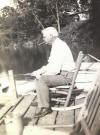

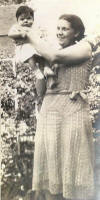
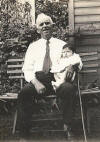
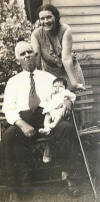
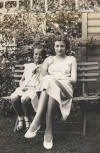
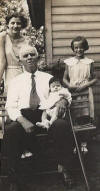
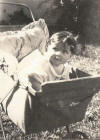
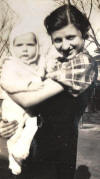


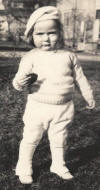



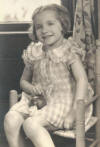
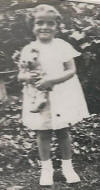
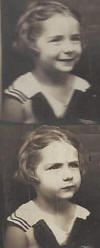
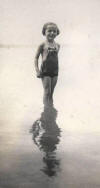
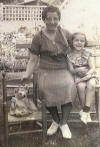
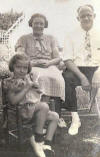
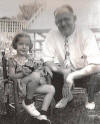
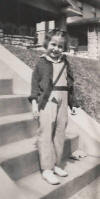
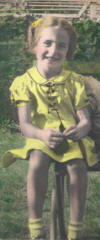
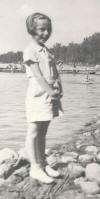
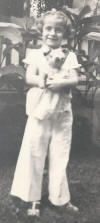
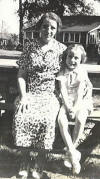

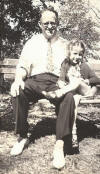




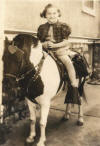
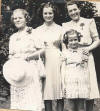
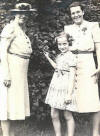
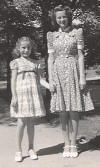



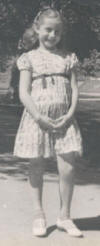
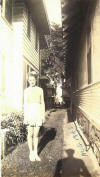

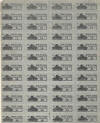
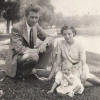

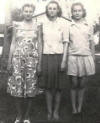
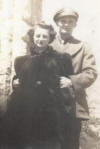


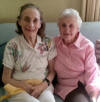


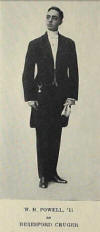
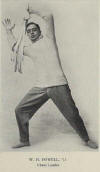

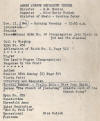
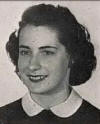
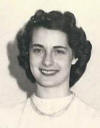
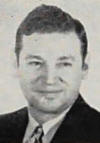
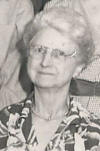
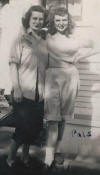
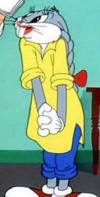
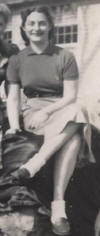


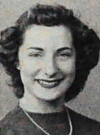
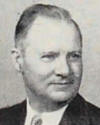
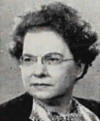
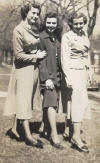
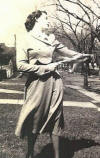

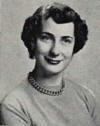

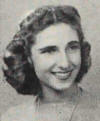
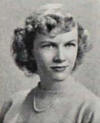

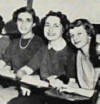

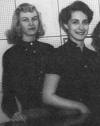




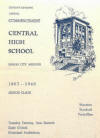
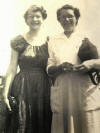
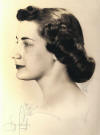
|